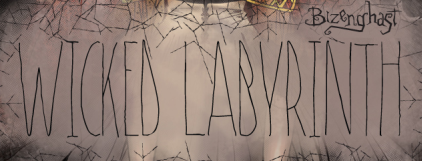 Electronic Arts - Tiburon
Electronic Arts - Tiburon

Project: NBA Live franchise
Role: Technical Designer
During the revitalization of the dormant NBA Live franchise, I was brought in to replace the old code-driven gameplay camera system with a more modern and easily tunable procedural camera. For this, I used the visual, node-based scripting language and stateflow tools built-in to EA's proprietary ANT game development framework. In essence, I was programming the brains for both camera operators as well as the director in the production truck.
I studied archived game footage in an effort to accurately mimic the choices and behaviors of professional broadcasters, but I also had to make decisions of where our gameplay camera had to differ from televised broadcasts for the purpose of better serving the game user. This effort resulted not only in a new broadcast-style gameplay camera but also several other styles of gameplay cameras.
Though my primary area of focus was on the gameplay camera, I also assisted in animating camera motion paths for non-interactive sequences using Maya and MotionBuilder, devised the "coolness" rating scoring system for highlight/replay selection, and designed data visualization presentation packages.
 TOKYOPOP
TOKYOPOP
Project: Skelanimals Snowball Spectacular; Bizenghast: Wicked Labyrinth
Role: Game Producer
I was called upon to help the anime/manga publisher launch their mobile games program. In addition to refining pitch concepts, I also assisted in selecting development partners and served as producer on two iOS/Android projects. We had an incredibly tight budget and timeline but still had to deliver a product worthy of the industry-leading TOKYOPOP brand. I was entrusted with the difficult task of shaping our game designs to gain the most bang for the buck. My designer hat had me thinking up ways to enrich our products, while my producer hat kept me mindful of feature-creep and the need to trim the fat constantly.
Between the two games, our combined development team was an international operation. That meant long days book-ended by Skype calls and making sure our contractors had enough unencumbered work to do on their side of the globe while I slept on mine.
Aside from project management duties, I also got my hands dirty with some design work. I did the sound design (music & sound effects selection/editing) for both Skelanimals and Bizenghast. For Bizenghast, I was more heavily involved in designing the traps/obstacles, reward system design, and level creation. Because of the need to rapidly create dozens of levels for the game, I insisted that our programming team provide us with some sort of level editing utility. This utility exported levels into a human- and engine-readable Lua script. To aid the other designers who would also be designing levels, I made a series of screencast videos walking through the process from using the level editor up through importing the levels into a test build.

Game Download:
[iOS] Full | Lite
[Android] Full
Screenshots: (click to enlarge)

Game Download:
[iOS] Full
Screenshots: (click to enlarge)








 Electronic Arts - Tiburon
Electronic Arts - Tiburon

Project: EA Sports MMA
Role: Assistant Producer
Career Mode Trailer:
EA Sports MMA is a brand-new IP for Xbox 360 and Playstation 3. I was initially brought on to assist with writing duties for the Career Mode but ultimately wound up becoming involved with nearly the full end-to-end workflow in implementing the resulting audio or text (via text emails, voicemails, web articles, cinematics, or other voiceover). This required learning several content management systems, databases, scripting systems, and animation utilities. In addition to audio duties, I was also responsible for maintaining and architecting portions of the content dispensing logic for the Career Mode.
Throughout the whole process I worked directly with engineers, audio technicians, concept artists, animators, and UI artists. So, essentially every department! This sort of juggling required not only coordinating between the different departments to guide assets "from cradle to grave" but also managing my own day-to-day tasks to make sure nothing was overlooked. I maintained thorough and detailed documentation in wikis, charts, Visio diagrams, Powerpoint decks, tracking sheets, and code comments and even helped train other developers how to work with our various content systems.
I never expected to be working in so many disparate parts of the game, but I certainly appreciated and welcomed the opportunity to spread my wings. It seemed that just like my time in FIEA, I was a great candidate to be the "everything else" guy.
 Gorilla Systems Corporation
Gorilla Systems Corporation
Project: Unannounced Wii Title
Role: Game Designer
Sorry, the game's secret, so I can't show you anything. (Project currently shelved by publisher.)
- Utilized Maya to place static cameras for pre-rendered backdrops
- Included configuring of resolution, aspect ratio, field of view, and close/far clipping rendering distances
- Designed 12 motion-controlled musical mini-games
- Daily talks with programmer and composer
 Electronic Arts - Tiburon
Electronic Arts - Tiburon
Project: EA Sports Central Online Technology Group
Role: Production Intern
As the feature owner for Matchmaking for EA Sport's shared online architecture (for Xbox 360/PS3), I contributed designs toward the continued improvement of the art of putting two players together in an online match. Stepping outside of the box, I also determined that there existed several distinct reasons players chose to play online and that matching strangers through an algorithm wasn't necessarily the best way to ensure a pleasurable experience for either party. Improvements are still secret but will begin rollout in 2010/2011 sports year titles.
 Florida Interactive Entertainment Academy
Florida Interactive Entertainment Academy

Project: Zephyr: Tides of War
Role: Producer/Designer
Website & Game Download: http://zephyr.vidzone.net
(Note: Game functions only in Windows XP; not Vista compatible)
Screenshots: (click to enlarge)



Video:
Zephyr: Tides of War is a voice-controlled vehicular combat game where the player takes the role of the ship's captain. It was developed over the course of two semesters by a team of 16 master's degree candidates while balancing a full class load. The game utilizes Emergent's GameBryo engine for rendering and Fonix VoiceIn to process voice input. A modified version of the Extreme Programming development methodology was used during production to ensure complete features and a "shippable" title at any given point.
Custom utilities were developed by the programming team to aid designers. A mission editor was constructed that allowed for entity placement/pathing and event sequencing based on events. This editor is included with the download package. A voice command logging utility showed quantified data about how well the software recognized voice commands and, if failing a certain tolerance, what the software thought was being said. Zephyr was tested against several ages, accents, and genders to ensure universal functionality.
3D models were created in Maya. Some animations were hand-keyed. Others were motion-captured with a 48-camera Vicon system and cleaned up with MotionBuilder. Motion blending was performed using GameBryo's provided utility.
- Co-operated with gameplay design
- Production team liason to Art team
- With Art Lead, provided direction for characters, wildlife, and environments
- Supervised animations. (Hand-keyed & motion-capture)
- Maintained Art team wiki
- Generated shotgun list of potential voice commands and respective crew V/O responses.
- Created scripted, multi-objective challenges using custom-built mission editor.
- Produced and supplied rip-o-matics
- Developed GUI prototypes
- Directed and produced live-action mock trailer
- Developed and maintained promotional website
Project: The Rhyme-Space Continuum (game pitch)
Role: Producer/Designer
Pitch Videos:
Game design pitched to faculty, students, and industry executives at the end of the first semester at FIEA. The goal of the game was to combine the action of a shooter with the scripted delivery of a rhythm game. Imagine Galaga mashed up with Beatmania or Starfox mashed up with Guitar Hero. The icons or enemies flying toward you would correlate with the background music. (Script and VO by Jason Fox. After Effects and A/V editing by Carl Dungca. Some graphics, images, and music uncredited but taken from Google Image search.)
Project: Project Giant Lizard (4-week rapid prototype)
Role: Producer/Designer
Screenshots: (click to enlarge)
Project Giant Lizard is a level built in the Unreal Engine 3 Editor (Gears of War version) in which the player is blown up to Ultraman proportions to combat a rampaging creature while trying to minimize collateral damage to the city. After initial research on Kismet scripts with a programmer, I took the reins and performed duties including level design, asset placement and importing, and event scripting. After about two dozen individually-scripted destructable buildings, we discovered Prefabs and were able to more quickly construct the city.